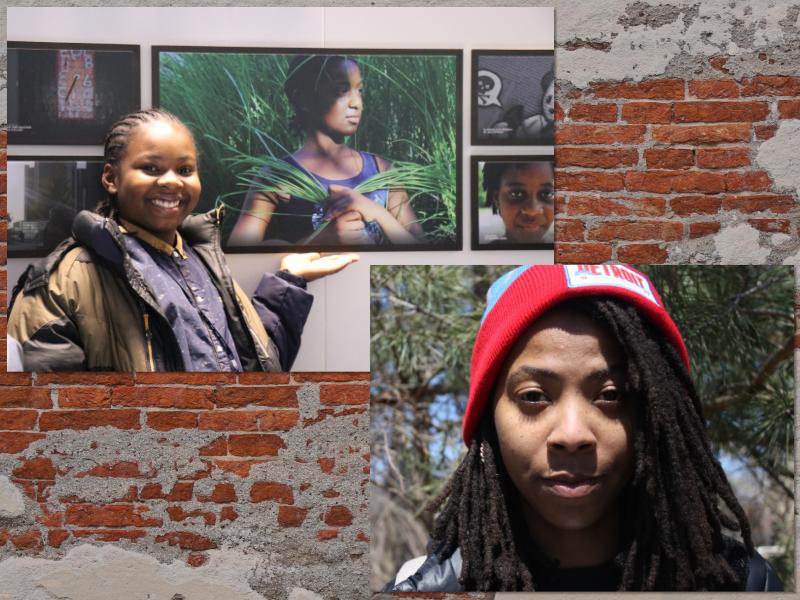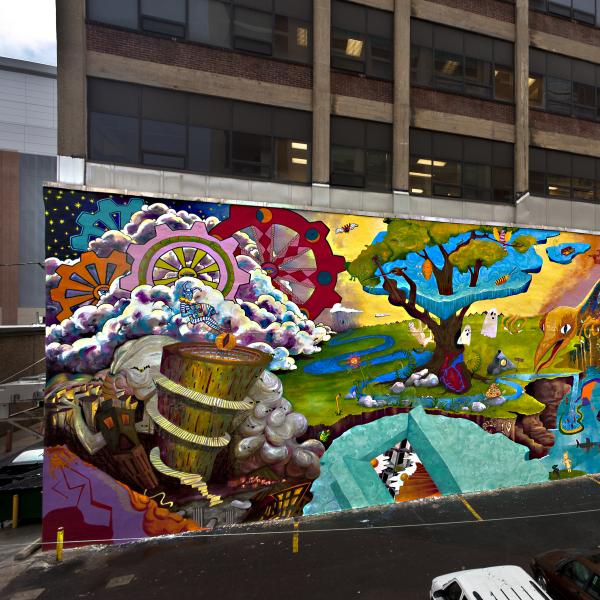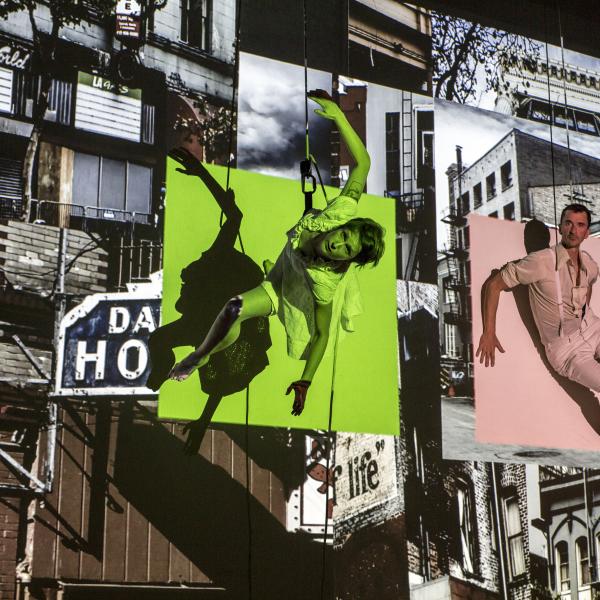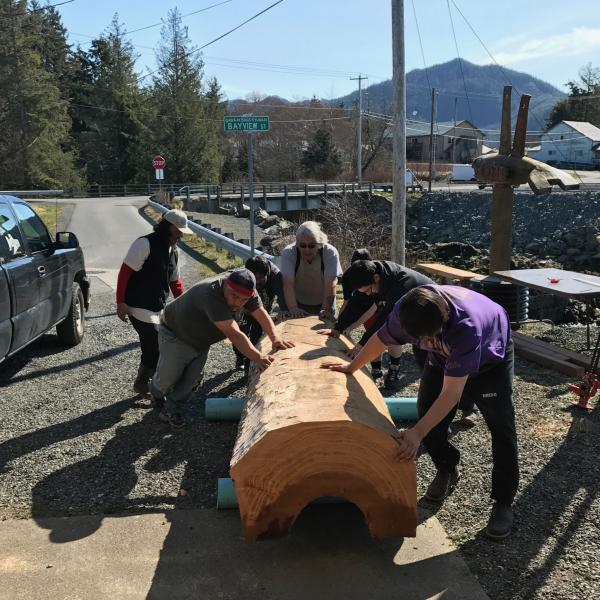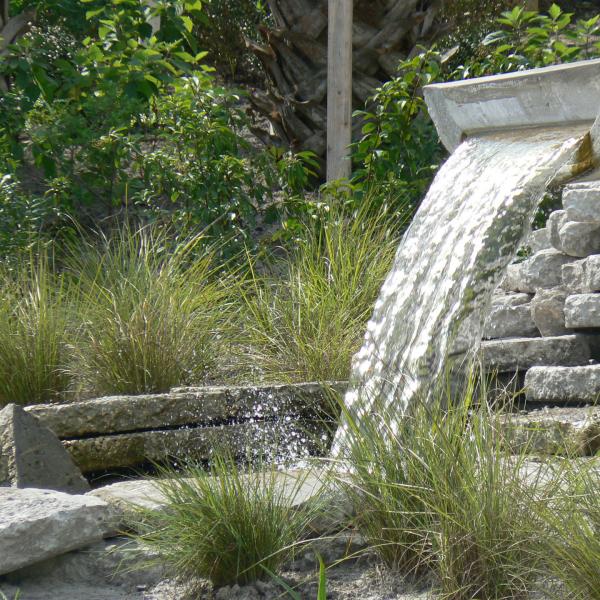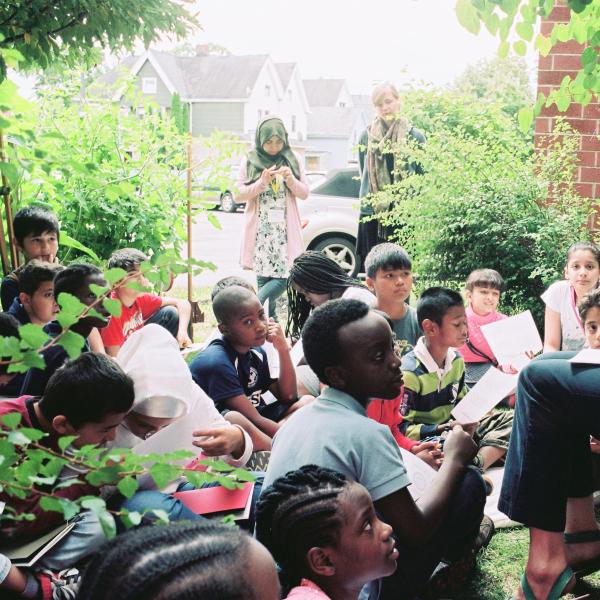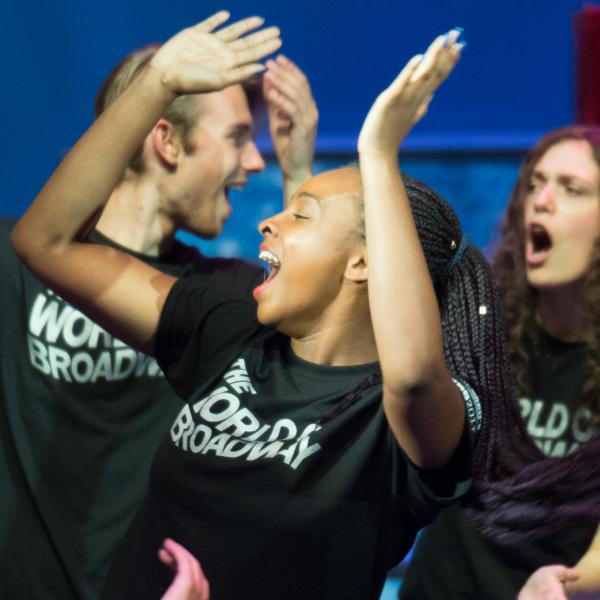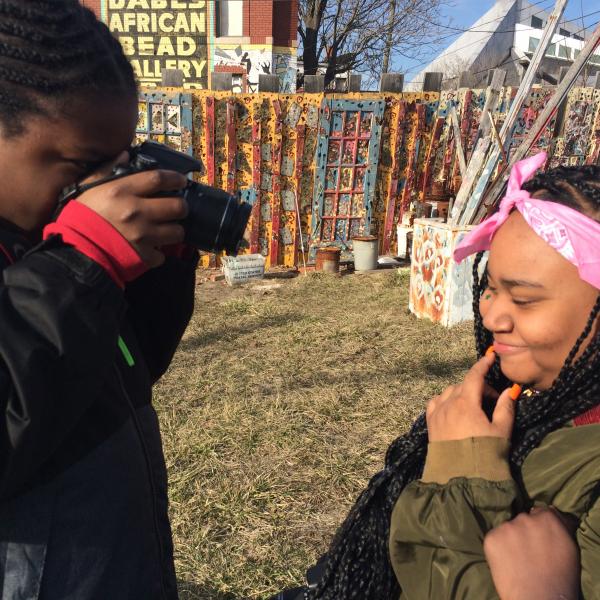Kristian Varano: My name is Kristian Varnano and I'm currently in Detroit at a super sweet studio recording with DonRico.
DonRico Hawkins: My name is DonRico Hawkins and I am at the studio with Miss Kristian and I am speaking with Mr. Adam.
ADAM KAMPE: AND I’M MR. ADAM, OR ADAM KAMPE, FOR THE NEA MAGAZINE, NEA ARTS. IN THIS ISSUE, WE’RE EXPLORING HOW PUBLIC ART IS BEING REDEFINED IN UNIQUE WAYS ACROSS THE COUNTRY. WE’RE TALKING ABOUT DANCERS ON THE SIDES OF MOUNTAINS, GROUP TOTEM POLE CARVING, OR, IN THIS CASE, COMMUNITY-BUILDING THROUGH SHARING PICTURES – TAKEN BY KIDS – IN GALLERIES, ON ABANDONED HOMES, AND, SOON, PROJECTED ONTO THE FAMOUS BELL BUILDING IN DOWNTOWN DETROIT.
ENTER DONRICO AND KRISTIAN.
DONRICO HAWKINS JR. IS A 7TH-GRADER STUDYING PHOTOGRAPHY WITH A PROFESSIONAL MENTOR IN THE EXCEL PHOTOGRAPHY PROGRAM OF FOCUS: HOPE, A MULTIFACETED INITIATIVE WORKING TO COMBAT GENERATIONAL POVERTY AND FILL IN EDUCATIONAL GAPS. KRISTIAN VARANO IS A PROFESSIONAL PHOTOGRAPHER WHO ONCE PARTICIPATED IN THE EXCEL PROGRAM AS A STUDENT, AND HAS NOW RETURNED AS A MENTOR. RUN BY ANNETTE VANOVER, THE EXCEL PROGRAM IS A LONGTIME NEA GRANTEE THROUGH OUR ARTS EDUCATION DEPARTMENT. HERE’S A SONIC PEEK INTO WHAT THE EXCEL PHOTO PROGRAM IS AND HOW IT WORKS.
Kristian Varano: The program that we specifically work in is under the Community Arts branch. In this program we have students grades, I believe fifth through eighth grade right now we have, and they are all working with their own camera to develop not only their photography skills but social skills and really just build this love for their community and a love for Detroit.
DonRico Hawkins: I chose to do photography because I thought it was a stress reliever and I thought it would be interesting, because for me, I am a shy child, so this really broke my shell as a student.
Kristian Varano: Kind of like DonRico, I saw myself blossom. I'm very shy, I'm super shy. Even as an adult, even as a teacher now, I still have a hard time putting myself out there. But I feel like with photography, it's effortless. I don't like to use my camera to hide behind, but it definitely gives me a reason to talk to people, to figure out their walk, to figure out where they're going.
DonRico Hawkins: The feeling that I feel when I take the image is I feel good because I know that I can conduct something to be my own.
Camera sound
DonRico Hawkins: Some things I have learned so far is that an image can express how you really feel about certain stuff like your neighborhood or your community. Such as the picture I took where we are at the Eastern Market with the vegetables on top of a garbage can. That shows me that even though you decay, you still live and you're not fully gone.
Camera sound
DonRico Hawkins: I took a portrait of my mentor, Miss Alexa. I really loved how the light hit her face and it was kind of an off guard picture, but I loved the fact that when I took it, it was kind of a good mistake. So I really love this one and I'm mainly focus with light as well.
Camera sound / Music Transition
Kristian Varano: Being a mentor takes me back to that place. It takes me back to that time when I got to take pictures. And just seeing the world through their eyes, every time they, like, show me their camera backs, I'm just like, "Oh, my God. That's incredible. I wish I took that shot." So it really puts in me, like, a fire to pick up a camera again myself. It reminds me that the young people in the city have so much that they're seeing, so much to say about what they're seeing. And it just, I don't know, it just gives me revitalization completely as an artist.
There are just so many things that a lot of our students, particularly in this community, don't get an opportunity to see or know exists. And these kids have been everywhere. They've petted alpacas. They've been camping with Annette, because she is, like, the most avid camper I've ever met. And I don't know, where are some other cool places you all have gone to?
DonRico Hawkins: Before I came to the program, I would have never knew the different spots that I could have went to, such as Cranbrook. And I knew it was like a campus full of beautiful art and it had different buildings that showed different things about Detroit.
Music transition.
Kristian Varano: Most of the sessions culminate with a gallery walk and an award ceremony. They still receive their pictures and they still have the opportunity to have a dialogue about their work and about their time in the program. So it's really sweet seeing them bounce back opinions and ideas and, you know, really give each other those, what I think are like college-level critiques.
AK: BEYOND GALLERY WALLS, DONRICO’S PHOTOS WERE ENLARGED AND ACTUALLY PASTED ONTO ABANDONED HOMES ALONG WITH THE WORK OF OTHER STUDENTS IN THE EXCEL PROGRAM.
Kristian Varano: I can definitely say as a community member that it has changed the game completely. Seeing those pictures, I think have instilled in quite a few people this huge sense of hope. They do so many things. They, I think, deter crime. I think that they encourage people to get out, walk about their community, see what's actually happening in the community. And it also brings attention to these super awesome kids. And I love the project so much so that I, like, called a bunch of my friends over and, like, made them paint boards so we could put them up in my neighborhood which has a ton of abandoned buildings as well. I like the idea of them just inspiring other artists to go forth and do the same.
DonRico Hawkins: I think it's a great opportunity to know how many people are actually walking past my images and taking the time out to look at them. I think it's also a great opportunity as well to know that my pictures are getting shown to the world.
AK: AND FOR THE FIRST TIME EVER IN SEPTEMBER, DURING THE INAUGRAL PHOTOGRAPHY FESTIVAL, SELECT IMAGES OF STUDENTS WILL BE PROJECTED ONTO THE BELL BUILDING ALONGSIDE ESTABLISHED PHOTOGRAPHERS. ON THAT NOTE, I ENDED OUR INTERVIEW ASKING KRISTIAN IF SHE HAD ANY QUESTIONS FOR DONRICO.
Kristian Varnano: My question for DonRico is, How do you plan on using photography to empower your community in the next few years?
DonRico Hawkins: I will become a mentor. I think it’s a great opportunity to show youth of my neighborhood, to show them that anything is possible. If you’re shy or scared, that the Excel program actually helps you express yourself in an image.
Kristian Varnano: I love it.
Music up.
AK: THAT WAS KRISTIAN VARANO AND DONRICO HAWKINS JR. ON THE EXCEL PHOTOGRAPHY PROGRAM, PART OF FOCUS: HOPE IN DETROIT. CHECK OUT THE REST OF NEA ARTS TO LEARN MORE ABOUT THE INVENTIVE WAYS ORGANIZATIONS ARE USING PUBLIC ART TO ENGAGE COMMUNITIES ACROSS THE COUNTRY. SPECIAL THANKS TO ANNETTE VANOVER FOR ALL HER HELP! DON’T FORGET TO FOLLOW US @NEAARTS.
FOR THE NEA, I’M ADAM KAMPE.
MUSIC CREDITS
ALL SONGS USED COURTESY OF CREATIVE COMMONS AND FOUND ON WFMU’S FREE MUISC ARCHIVE. WWW.FREEMUSICARCHIVE.ORG
1. PUT THE HAMMER DOWN AND QUESTING BY ARI DE NIRO FROM JULES LIVES.
2. LOOKING BACK AND LATE NITE TALES BY LEE ROSEVERE FROM MUSIC FOR PODCASTS.
